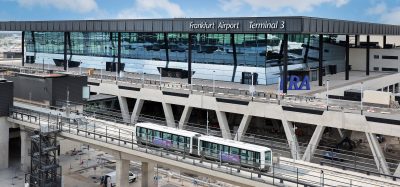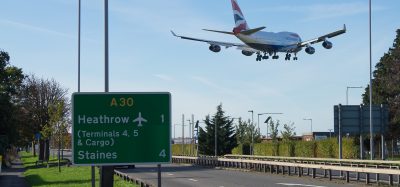Driving safety forward
Posted: 13 December 2010 | Tony Heap, Strategy and Standards Officer in the Aerodrome Standards Department, UK Civil Aviation Authority (CAA) | 1 comment
Working airside has never been short of hazards. Airport operators and regulators have long concentrated safety planning on protecting those individuals working on ramps, aprons, taxiways and runways. Unfortunately, ground handling incidents continue to rise worldwide, resulting in injuries to personnel and damage to aircraft and property. Additionally, the use, and indeed, misuse of vehicles in airside areas has led to major operational disruption at busy airports.
Working airside has never been short of hazards. Airport operators and regulators have long concentrated safety planning on protecting those individuals working on ramps, aprons, taxiways and runways. Unfortunately, ground handling incidents continue to rise worldwide, resulting in injuries to personnel and damage to aircraft and property. Additionally, the use, and indeed, misuse of vehicles in airside areas has led to major operational disruption at busy airports.
As part of our on-going strategy to improve airside safety, the UK Civil Aviation Authority (CAA) is planning to introduce a brand new Airside Driving Permit scheme. Our proposals are currently out to consultation but we hope to have the new permit scheme up and running at UK airports in 2011. The development of the scheme has led to a unique working partnership between the CAA and Industry. The working group tasked with developing the scheme, although guided by the CAA, has drawn its membership from a variety of Airport Operators Association (AOA) member aerodromes and will form again to review the comments and edit the final publication.
The CAA first produced a formal Safety Plan in 2004, which included a focus on ramp safety. In 2006, the Safety Planning process was substantially changed when it employed both a ‘bottom up’ model, using the considerable expertise in the organisation to identify potential risks, and a new ‘top down’ process, starting with the major risks identified by available data, such as Mandatory Occurrence Reports. An initial working group, including representatives from BAA and AOA, was subsequently set up to analyse the root causes of incidents that occur on the apron. This group recommended a series of actions aimed at reducing the risks to aircraft and their occupants while on the apron area. A larger CAA/industry working group was then established to formulate an action plan to push forward further improvements. The Ground Handling Operations Safety Team (GHOST) was created and met for the first time in December 2007. One of its first recommendations was for a new national airside driving permit scheme to replace the existing AOA system.
Current AOA permits are issued according to the applicant meeting two criteria; medical standards and competency standards. Medical standards are selfexplanatory, although it should be noted the physical requirements are far above those needed to drive the equivalent vehicle on the roads. Competency standards are currently catered for in the multi-choice test questionnaire presented at the end of the training course.
With airside driving identified as a major contributor to hazards on the apron, the GHOST team established that changes to the current airside driver training requirements were necessary. Particularly, as existing CAA guidance, although comprehensive, lacks clarity on the rules governing the training, issuing of driving permits and medical standards required to obtain an Airside Driving Permit.
The three big differences between the existing AOA scheme and the proposed new scheme are medical requirements, aerodrome area covered by the national permit scheme and maintenance of competency. In the past 10 years, records show that few accidents have been attributed to a medical condition; most are caused by lack of appreciation/ understanding of the environment they are working in. This falls mainly into the competency side of the equation.
The results of work related to Human Factors have indicated that standardisation may be the key that helps driver awareness and provides the clues to help avoid driver errors. Therefore, standard markings and practices, including Radio Transmissions (RT), are being promoted as mitigation. In the manoeuvring area, we believe this should be addressed by compliance with Annex 14, CAP 168 and CAP 413.
As mentioned before, Airside Driving was one of those activities identified as a root cause of incidents and accidents on the apron. Driving on the airside of an airport in close proximity to aircraft and within the areas of intense activity, usually in a restricted space, requires a level of competence gained through good training, experience and regular testing supported by a safety management system that allows the aerodrome operator to monitor the standard of airside driving activities. The new scheme is designed to reduce the amount of vehicle related accidents on the apron by increasing the competency requirements and reversing the growing trend in vehicle related runway incursions by restricting the access to the runway to only those essential drivers needing access during operational hours.
The working group investigated the proposal to introduce the concept of aligning the Permit Scheme with the GoSkills initiative. GoSkills is the Sector Skills Council (SSC) for passenger transport. Licensed by the UK Government, their mission is to work with employers UK-wide to improve the skills that make a difference to the performance of the passenger transport sector. The training will be based on the principals of the National Occupational Standards (NOS) for Aviation Operations on the Ground. Following a successful training course, the applicant will receive a nationally recognised qualification. The incentive in choosing this route was to emphasise the point that anyone holding the new Airside Driving Permit will be regarded as a professional driver with the competencies and attitude the status endorses. Further work in this area however has highlighted the need to separate the airside driving scheme from the NOS until such time that the NOS for aviation are developed further.
Therefore, we are now pleased to announce the publication of CAP 790 Airside Driving and Vehicle Operation which is for available for consultation on the CAA website until 16 November 2010. The document provides national guidance on airside vehicle operations and driver permits and recommends standards to be set by aerodrome authorities. It includes material on driver training, qualifications, medical requirement/fitness to drive and maintenance of competency and on vehicle standards.
All airside users are responsible for maintaining airside safety; in the UK the Health & Safety Executive is actively working with the CAA to combat the increasing numbers of accidents and incidents on the apron and runway incursions by vehicles.
The objective of the guidance is to assist aerodrome authorities in establishing a regime where staff who are required to operate vehicles and equipment airside are properly trained to do so in a safe manner with the full knowledge of the relevant rules, procedures and instructions and an awareness of the consequences of contravening them. Guidance is also provided for employers regarding the provision and safe use of vehicles and equipment.
Depending upon the scale and complexity of the aerodrome and the individual requirements of the driver, the guidance material will take into account the following main areas:
◆ A generic airside driver training programme which covers operational safety and health and safety aspects of operating vehicles, plant and equipment in close proximity to aircraft on aprons, stands and airside roads.
◆ Where the specific job function requires the driver to operate on the manoeuvring area, additional training on the hazards associated with runways and taxiways should be covered.
◆ An essential requirement of operating a vehicle on the manoeuvring area is the need to use VHF radio communications with Air Traffic Control, which will require training in the correct use of RT and standard phraseology.
The aerodrome authority should establish a system for the issue of ADP for drivers. The system should ensure that a permit is not issued unless the individual meets the minimum standards expressed in CAP 790 and there is confidence that the minimum standards will continue to be achieved through refresher training, competence monitoring and audit arrangements.
The airside driving permit scheme covers three specific areas of the airfield. The areas have been identified separately in recognition of the increased level of competency required to safely operate on the manoeuvring area and to design the training framework accordingly.
The initial permit awarded to a new driver who has successfully completed the training course will be the ‘A’ permit. The ‘A’ permit allows access to the Aprons, Stands and Airside Roads, which may include controlled and uncontrolled taxiway crossings. The awarding of the ‘A’ permit allows the holder to continue their training to operate on the manoeuvring area.
The ‘M’ permit allows access to the manoeuvring area excluding the runway. It is a pre-requisite for training for this permit that the candidate has successfully completed a Radiotelephony course. The holder of the ‘M’ permit will have attained a higher level of competence during driving training and will be encouraged to maintain competency through a structured maintenance of competency procedure.
The ‘R’ permit allows access to the runway during operational hours. Exposure to greater risk encountered when operating on the runway requires the driver to demonstrate the highest degree of competence. Therefore, the permit is valid for a short duration (one year) and the driver is required to maintain competency throughout the year and may be subject to audits during the period.
To enable aerodrome operators to establish and maintain a robust airside driver permit scheme, additional guidance contained within the CAP relates to language proficiency, maintenance of competency and structured training programmes. The CAP contains examples of best practice currently used by industry that may help aerodrome operators to manage the scheme. For example, reference is made in the structured training programmes to the use of technology for the delivery of training and assessment of the candidates. The working group believes the use of this new technology provides the key to a robust training and assessment programme as well as providing an engaging and interactive training session for the participants.
We are confident that this initiative will make a significant contribution to reducing incidents and accidents on the apron and a safer working environment for many years to come, and illustrates the CAA’s commitment to maintaining the UK’s world class aviation safety record.
About the Author
Tony Heap
Tony Heap is a Strategy and Standards Officer in the Aerodrome Standards Department at the UK CAA. He is currently on secondment to EASA to help the Rulemaking Directorate develop the new rules applicable to Aerodromes from 2013. Prior to joining the CAA, he was with BAA for 30 years mainly in an operations management role. He is also the Rapporteur for the ICAO PANS-Aerodrome Study Group.
Join our free webinar: Beyond silos: How ecosystem thinking elevates the airport experience
In today’s complex aviation landscape, airports are moving beyond siloed operations to embrace a new era of collaboration. This webinar focuses on how leading airports are using ecosystem thinking to adapt, personalize, and continuously improve every touchpoint, boosting both passenger satisfaction and non-aeronautical revenue.
Date: 13 Nov | Time: 10:00 GMT
REGISTER NOW TO SECURE YOUR SPOT
Can’t attend live? No worries – register to receive the recording post-event.


















Interesting blog, good information is provided regarding Airside Safety Training. Was very useful, thanks for sharing the blog.